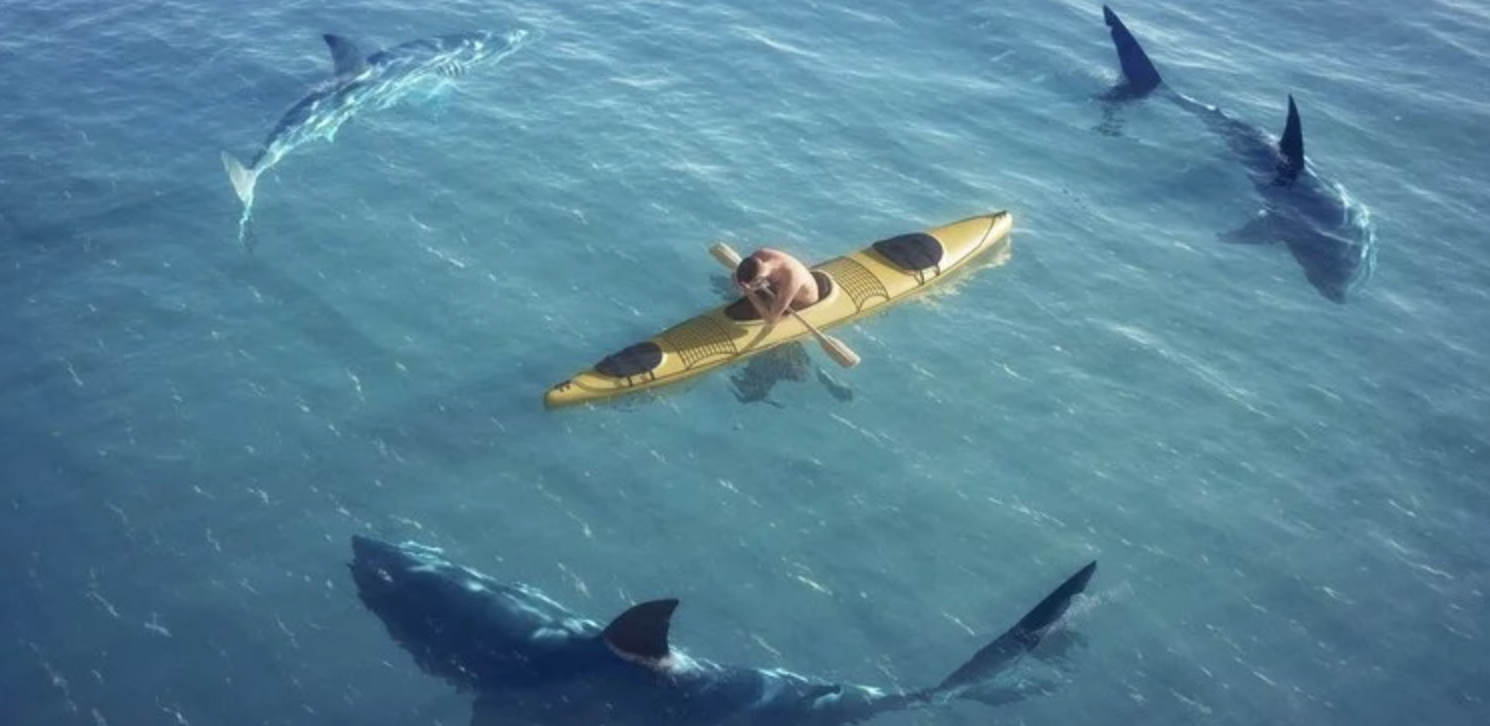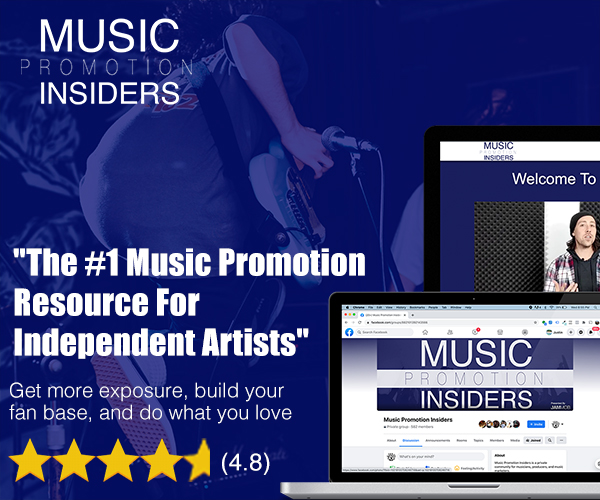One of the biggest mistakes that independent artists make when promoting themselves is trying to mimic the promotional strategies of major record labels.
It’s understandable why most artists would make this mistake.
I mean… it’s worked for a long time. And it’s still working for countless artists like Kendrick Lamar, Ed Sheeran, Bruno Mars, and many others.
So why won’t it work for you?
The answer is actually quite simple.
You probably don’t have several hundred thousand dollars that you can just throw at the wall in hopes that something sticks.
So let me be very clear about something: Do not try to promote yourself using a branding strategy.
Just to clarify…
Branding yourself and your music in the sense of creating an identity is something else entirely and not what I’m talking about here.
A branding strategy is a long-term plan that major labels use to bring awareness to artists. It can be very effective if you can afford it, but it’s not a smart move for most independent artists.
Independent artists would do much better to adopt what’s commonly known as a “direct response” strategy.
I’ll explain what that is in a moment, but first let me share the 2 key reasons why a direct response strategy is generally much more effective for independent artists:
1.) It can be done effectively with a very limited advertising budget.
2.) You can make your money back almost immediately. Which allows you to reinvest your advertising budget and scale your promotions quickly.
A branding strategy’s focus is primarily to create awareness.
The purpose of direct response marketing is to focus on getting your fans to take action.
As an independent artists, you have to ask yourself:
“Do I just want people to know who I am…” - (branding strategy)
“... or would I rather build a following of fans that download my music, show up to my shows, buy my t-shirts, and share my music with friends?” - (direct response strategy)
Instead of spending a ton of money getting your name out there to everybody, why not spend just a little money putting a system in place that focuses on engaging the people that would really enjoy your music and become your core fanbase?
A Shotgun Approach To Marketing
A branding strategy is what’s commonly referred to as a “shotgun approach”.
A shotgun approach is where labels will spend a tremendous amount of money to get artists exposure everywhere they possibly can in an attempt to reach as many people as possible.
Labels will spend a ton of money to get artists exposure on radio, tv, billboards, magazines, etc.
The idea is to bombard as many people as possible with the artist’s name, image, and music until they show interest and eventually spend money on downloads, concert tickets, merch, etc.
This can be very effective but it’s also very expensive.
It also takes a while for labels to recoup their advertising investment and turn a profit. That’s fine for them, because they have the capital that allows them to do this.
But for most independent artists, a shotgun approach just isn’t feasible.
So let’s talk about how direct response works.
How Direct Response Marketing Works For Musicians
With direct response, we focus on targeting our advertising only towards the people that are most likely going to be interested in our music.
And with the help of all of the consumer data that’s being collected by websites like Facebook and Google, it’s now easier than ever to find people that are interested in exactly what we have to offer.
And unlike major magazines and TV outlets, independent artists like yourself can purchase highly targeted advertising on Facebook, YouTube, and millions of other websites for literally pennies.
Seriously… pennies!
That’s no joke.
You can spend $5 a day on Facebook and have your ad delivered to thousands of people a day.
Now that’s not to say that every single one of those people is going to click on your ad or purchase your album, but some of them will… especially if you know how to do it right.
I’ll share a really cool resource that will help you learn exactly how you can use Facebook ads to build your fanbase in a moment, but first I want to delve back into direct response marketing so you can have a better idea of how all of that works.
The purpose of running ads on Facebook isn’t just to get your name and image in front of people.
Instead, your focus is to get people to click the ad. But what happens when they click the ad?
Well… if you know what you’re doing, you’re going to send that person into your sales funnel.
Hopefully, you already have a solid sales funnel in place, but let me give you a brief overview of what it should look like in case you don’t.
Collect The Lead
First thing that you want to do is get your potential new fan’s contact information.
This will allow you to follow up with your fans and build relationships that will eventually result in album sales and sold out shows.
The best contact information you can get is an email address.
Why is that?
Because you have complete control over that asset.
You never know when third party websites are going to change their algorithms or go the way of MySpace, so you don’t want to leave all of your fan data with them.
There’s absolutely nothing wrong with getting Facebook likes, YouTube subscribers, and Twitter followers… in fact, you should do that too.
But most importantly you should get the email address. That way you always have control of fan info and you can follow up with them any time you like.
So how do you collect contact info?
You’ll need three things:
1.) A squeeze page - this is just a single page with the sole purpose of gathering, or “squeezing”, contact information like an email address.
2.) An email autoresponder - this is a database that collects and stores your fan’s information. It’s also used to send out automated email followups, so you don’t have to sit at the computer sending out emails to your fans every day.
If that sounds complicated, don’t worry there are some great autoresponders out there that are super simple to use, even if you have no “techie” skills whatsoever.
3.) An incentive - rather than just ask somebody for their email address, you’ll want to give them some sort of immediate incentive in exchange for their contact info.
There are a lot of things that you can use as an incentive, but the most common one for independent musicians would be a free download.
Once you’ve collected your new fan’s email address, you can now follow up with them anytime you release new music or have a show coming up in their area.
But your initial sales funnel shouldn’t stop there.
After The Opt-In
Once they’ve “opted-in” (that’s some marketing jargon that means a person has signed up to your email list), they should then be immediately directed to what’s commonly referred to as a “Thank You” page.
If you’re smart (and I know you are), your Thank You page will serve 2 functions:
1.) Immediately deliver the incentive that you promised in exchange for the fan’s email address.
2.) Offer them something to buy at a price they can’t say no to.
You see, once somebody has clicked on your highly targeted ad, they have shown interest in what you have to offer.
And after they’ve given you their email address in exchange for a free sample of your music, they are now invested in you - albeit in a very small way.
This person has already jumped through 2 hoops to get a download of your music, so it’s reasonable to assume that if you gave them the option to download your entire album for just $1, they would almost certainly jump at the opportunity.
Now, you may be thinking: “There’s no way I’m going to sell my album for just $1”.
Well, there are dozens of reasons why you should be happy to sell your album for a dollar, but I don’t have time to get into all of them right now.
Instead, I’m just going to give you the #1 reason why you should do it in this particular instance.
Once the fan has pulled out their credit card and given you a single dollar, you’ve broken through a tough barrier. Now the person is in “buying mode”.
When a person is in “buying mode”, they are much more likely to spend additional money with you.
Think about the last time you purchased something on Amazon. Remember when they showed you the items other customers bought when they purchased the same thing you just did?
There’s a reason they do that. Because once a person already has their credit card out, it’s much easier to sell to them.
That’s why your sales funnel should contain “Upsells”.
Upsells
Upsells are additional items that you sell to increase the value of a transaction after you’ve made the initial sale.
For example, after somebody purchases your album for $1, you can offer them an entire box set of your last 4 albums for the limited time offer of $20.
There’s a little bit of psychology at play here.
They’ve already decided in their mind that your music is worth spending money on, so if you offer them more at a price that’s feels like a great deal, they are much more inclined to continue spending money with you.
Now what if you bundle in a t-shirt that normally costs $20 with the box set?
Offer them the t-shirt and the 4 album box set for $35.
That will substantially increase the average “cart value” of each fan. (cart value simply refers to the amount a fan spends with you at checkout)
When you increase your average cart value, you in turn increase the average amount a click on your ad is worth, and ultimately you’re increasing the amount you can spend on advertising to build your fanbase.
Getting this process dialed in so that you’re getting your advertising investment back as quickly as possible makes this system easy to scale.
That’s the secret to rapidly growing your fanbase.
How To Implement This Strategy
The example I just gave you is pretty basic, but it should give you a few ideas.
If this is all new to you, it may seem a little overwhelming. You may be thinking…
“Okay, this sounds great and all, but…
How do I use Facebook ads to find people that might be interested in my music?
How do I create a squeeze page?
What the heck is an autoresponder again?
How do I build Thank You pages and process payments?”
I know it sounds pretty complicated, but I promise it’s not. You just need someone to walk you through the entire process step by step.
And I have some good news…
There’s an amazing series of videos that will walk you through the entire process step-by-step and finally get you on your way to earning a great living doing what you love once and for all.



